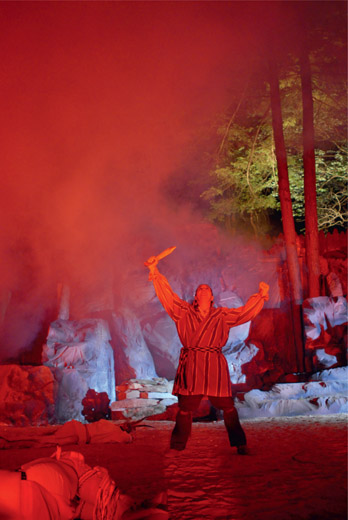Now that we have dealt with all the various settings that are required to get a properly exposed, focused, and framed shot, let’s investigate some of the really great features that are available to us with most DSLR cameras. Over the next few chapters we will investigate various metering modes, auto-bracketing, and EV compensation settings. What’s different about these three settings is that they are simply automating things that we would normally just do manually. All of these settings are usually things that I will decide upon before the start of a photo-call and will leave in place for the duration of the shoot, with the possible exception of altering EV compensation settings if I notice that things are turning out significantly over-exposed or under-exposed. The other great thing about these three settings is that they all allow us to concentrate more on getting good shots, and eliminate the need to count how many pictures we’ve taken or artificially adjust our exposure based on the unusual lighting situations we might find ourselves in.
Meter Priority
Meter priority settings aren’t really anything terribly new, as they have been available on film cameras for many decades. However, in conjunction with auto-bracketing, they are a very powerful tool. Simply put, the various meter priority modes that you can select from will either partially or fully automate your camera’s ability to correct the aperture and shutter speed for the proper exposure for each shot. Metering modes usually come in at least four variations, including aperture priority, shutter priority, manual, and program modes. Smartphones and point & shoot cameras, along with the lower end of entry-level cameras, may have these as options, but often have these built in to a more user-friendly format. They will come with various pictograms to select from that will do some of the work for you, if you are taking pictures in certain circumstances. Simply match the pictogram on your camera to the situation that you’re trying to photograph and click away. While all of these modes are certainly useful for the novice photographer, allowing them to select one that is appropriate for taking close-ups of nature versus another best suited for taking portraits of friends, they are rarely appropriate for our purposes. Unfortunately, I’ve never seen a “take pictures in the dark theatre” button, so unless you know exactly what settings these various pictograms represent, it’s probably better to control the settings individually ourselves, so that we can adjust them for our particular circumstances.
Auto-Bracketing
Auto-bracketing is the practice of taking multiple exposures of a single “setup” during a photo-call to ensure that you have a selection of exposures to choose from when selecting photographs for your portfolio. In the age of film, this was a fail-safe for several reasons, the main one being the delay in time between the photo-call and getting your slides back from the camera shop.
Auto-bracketing is one of the great new features available to photographers in the digital age. This feature allows you to automatically take multiple shots, with a preset exposure variation between the shots, all with one shutter-release press. In the past, photographers with all-manual cameras would need to frame up the shot, take one exposure, and then reset the camera to another variation, take another shot, and repeat as needed.
EV Compensation
The EV compensation function allows the user to semi-permanently alter the response of the camera’s light meter. This is done either to recalibrate a meter that is reading slightly off, or to reset what we think the camera should consider to be optimal exposure. The second option is the one that I find myself relying upon fairly frequently in my work.
Any time that we can leverage new features in our camera that then allow us to spend more time concentrating on the accuracy and artistic nature of our photographic work, the better. By the time this book is published, there may be new features out there, and it is my hope that we can continue to discuss how to utilize all of the features and functions of today’s cameras to further our craft.

